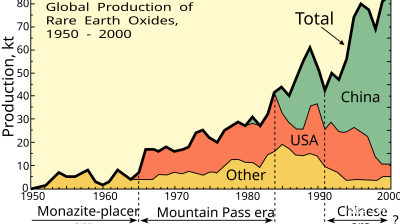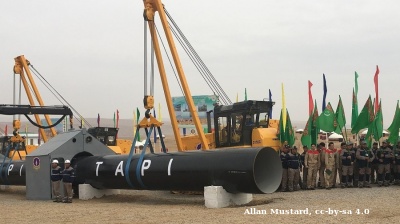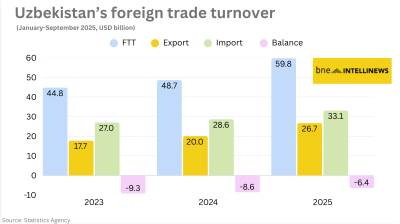Uzbekistan was one of only two major economies in the world to avoid recession last year and as the pandemic recedes the economy is bouncing back. Since Uzbek President Shavkat Mirziyoyev took over in 2016 growth has soared to over 6% a year, but during 2020 it fell to 1.7% as the lockdowns disrupted supply chains and hurt commerce. But in 2021 the economy staged a comeback and growth has returned to 6.2% in the first half of the year. The World Bank upped its GDP forecast for the full year to 6.2% in October from 4.1% previously, and to 5.8% in 2022.
Growth is already strong but the country has meagre domestic resources and has reached out to the international financial institutions (IFIs) and international investors to help it bootstrap its economy. The government is pouring money into investment projects and spending heavily on social programmes, but the focus is not simply to make its people feel a bit richer; the focus is to invest into human capital and infrastructure so that its growth becomes self-sustaining and sustainable.
Deficit and debt
The budget deficit has also been growing fast, as the government had to cope with the economic shock of the coronacrisis and the financial demands of transformation.
“There has been a budget deficit since 2017, when it was 1.9% of GDP. It fell to 0.8% in 2018 but jumped again to 2.6% in 2019, 2.9% in 2020 and it was over 3% for the first nine months of this year,” Odilbek Isakov, the deputy Finance Minister of Uzbekistan, told bne IntelliNews in an exclusive interview. “And that is not including some of the money spent on reconstruction and additional social support spending. That has driven the debt up.”
“Lower policy-based lending and higher tax revenues from a rebounding economy offset higher budget spending on social support, health and public infrastructure.
“We have run a budget deficit for the last few years and it has grown more and more as expenditure was needed to support society: social spending, schools, hospitals, salaries, etc. Spending has gone up many times in the last few years." he said.
“Though the deficit was financed through an increase in public debt, robust nominal GDP growth contributed to a slightly lower ratio of public debt to GDP of 38.5% of GDP in the first half of the, compared with 38.9% at end-2020," the World Bank said in its last assessment.
Much of the new spending next year will be financed by debt as well. The country's public debt in the first half of this year expanded by $1bn to $24.2bn, but had surged again by the end of September to a record high of $36bn, or 57% of GDP. Of the external debt, the public debt amounted to $22bn, up 3% YTD. Private debt was $13.9bn, up 11% YTD.
The plan is to expand debt again modestly next year to continue the investments into the economy. During the deliberations on the new 2022 budget the Accounting Chamber decided to increase the debt up to 60% of GDP next year with limits on new agreements of $4.5bn.
From these funds, $2bn will be allocated to support the state budget and finance non-project activities, and another $2.5bn will go to finance investment projects.
Most of this debt – Isakov estimates about 90% of it – has been raised from the IFIs, but he says it is still very moderate and Uzbekistan maintains a BB- with stable outlook from Fitch and S&P.
However, after the coronacrisis-related spending recedes the Finance Ministry says it wants to bring debt down again to the pre-corona level of 27% of GDP. The government also plans to keep the level of public debt and the budget deficit within 50% and 2% of GDP in coming years respectively.
Another option is to issue bonds on the international exchanges. Uzbekistan’s debut $1bn Eurobond issued on the London Stock Exchange (LSE) in February 2019 proved a smash hit, with demand of over $8.5bn, or eight-times oversubscribed.
The launch was made with yields of 4.75% on the 5-year note and 5.375% on the 10-year note and was greeted with an air of optimism among investors who attended Uzbekistan’s New York, Boston and London roadshows. The issuance is set to pave the way for regular debt sales.
Now Uzbekistan’s leading corporates are getting into the game, with the state-owned oil and gas company Uzbekneftegaz launching plans for a Eurobond issue in November. The company is marketing its debut USD-denominated Eurobond with a tenor of five and/or 10 years and estimated a yield of 4.7-5.2%, according to preliminary deal terms unveiled by VTB Capital (VTBC) at the start of November. That bond will join UzAuto Motors, the country’s leading carmaker and the only other Uzbek corporate bond on the market.
Investments
The epidemic has been an economic shock to the economy, but underlying that has been a large state investment programme to rapidly modernise the economy.
The previous government under-invested, leaving the country with poor infrastructure, education and health services among other problems. We need to spend the money now. We have a brain drain because of the low salaries. The government needs to invest into our human capital.
As the government gets more into its investment programme it is starting to look at diversifying its funding options. In the energy sector, for example, it has conducted the first private-public partnership (PPP) investments to build power stations. Likewise, money for the expansion of the NavoiAzot chemical plant was initially financed with loans that carried a state guarantee, but new projects at the plant are now being funded with private and commercial investments.
“We are starting to use more private investment via PPP,” says Isakov. “In five years we have invested into power stations using public money but now they are all PPP, with no public money at all.”
Those power projects include a solar power plant at Navoi and plans for more that were co-funded by the Asian Development Bank (ADB) and European Bank for Reconstruction and Development (EBRD), who continue to play an important role in Uzbekistan funding plans, especially for green energy, which is supposed to make up 25% of the generating capacity by 2030, according to the government’s plans.
The overarching theme of all these investments is to comply with the UN’s Sustainable Investment Goals, 16 goals in total, that cover things like the green economy, social issues such as education and health, clean water and the like, says Isakov.
“We are the first sovereign in the region to have a SDG framework,” says Isakov. “We are spending on 11 out of the 16 goals at the moment and we will have to issue more bonds to cover a $5bn-$6bn funding gap. In all we will spend around $15bn on the SDG if you also include the private investment.”
The Ministry of Finance is not just looking at London but is also in talks with the ADB, looking at green sukuk bonds and the Islamic Development Bank and the Gulf Cooperation Council from the Middle East as possible sources of funds.
Banking sector privatisation
The Ministry of Finance is also playing a central role in Uzbekistan's bank privatisation drive, as it is the owner of the big state-owned banks. Here too, the IFIs play a central role, as they are helping to restructure the banks and have been invited to become stakeholders in the first phase of the sell-off. The EBRD, International Financial Corporation (IFC) and ADB are all playing an active role in the privatisation.
“Once the IFC is in a bank's shareholder structure it gives the investors a reassurance of the quality of the bank and then they are easier to sell,” says Isakov. “We can bring stronger investors who know how to improve a bank's performance and governance.”
Iskakov is very upbeat on the potential of the banking sector, which was under-utilised in the Karimov-era and so the privatisation of the sector should be a fillip for the economy’s development.
“The market is far from saturated. There is lots of demand,” says Isakov. “A large percentage of the population does not have a bank account. There is a huge potential.”
But while the first deals were done in September, the process is still only stepping off square one: 80% of the banking sector assets are still in the state’s hands, says Isakov, and three quarters of the loans they make are to state-owned enterprises (SOEs).
“The government has for many years overcrowded the banking sector and the SOEs have crowded out the loan market,” says Isakov.
Under the new administration the emphasis has shifted to growing the loans to the small and medium-sized enterprises (SMEs) that will also support more job creation in a country where over half the population is under 30 years old.
“We have to make sure the SMEs have access to funding that is cheap,” says Isakov. “But so far there is only a fraction available of what is needed. By 2030 the population of Uzbekistan will be 40mn people – more than in both Ukraine and Poland.”
By then the per capita incomes will have risen from just under $2,000 today to $4,500 and the size of the economy should have trebled from today’s $60bn to $180bn, according to the government’s forecasts.
The banks are being transformed early on as once the 15 really big state-owned industrial companies are sold off they will need regular banking services and a functioning capital market. Selling off the banks will only be the first step in creating that capital market: once the last bank is sold the financial sector will only have finished the first stage of a much larger and more ambitious programme to create a domestic capital market to support industry.
“Over the last five years the government has been offering state guarantees but today we want the private sector to take up this task, as it is a profitable business,” says Isakov. “The government will exit these businesses by selling to strategic investors or via IPOs and the companies will be better managed as a result. This is the direction we are travelling in.”
Comprehensive bank sector reforms were launched in May 2020, including a concrete lists of banks to be sold, and the seeds of the change were planted, says Isakov.
“It won’t be swift and we are not selling for selling’s sake,” says Isakov. “So each exit has to be tailored, as it has an impact on the economy. We need to think about the consequences as a chain reaction and how it will affect society. Eventually we have to give everything to the market and the government’s role will become more about targeted subsidies to help the poorest sections of society. That is why it’s more important to make growth in GDP per capita the goal, not just earnings. We need to improve quality via developing human capital and infrastructure that was left over from the Soviet-era.”
Features

Russian e-commerce giant Wildberries goes on a mysterious M&A spree
Russian e-commerce giant goes on M&A spree Almost a year after the controversial merger with a leading outdoor advertising firm, Russia’s leading e-commerce site Wildberries is indulging in a fresh bout of eyebrow raising deals.
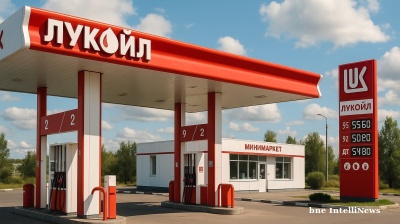
US expands oil sanctions on Russia
US President Donald Trump imposed his first sanctions on Russia’s two largest oil companies on October 22, the state-owned Rosneft and the privately-owned Lukoil in the latest flip flop by the US president.
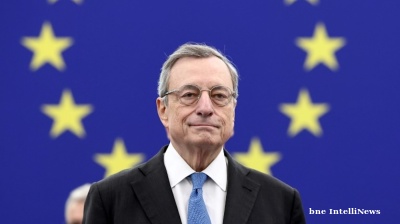
Draghi urges ‘pragmatic federalism’ as EU faces defeat in Ukraine and economic crises
The European Union must embrace “pragmatic federalism” to respond to mounting global and internal challenges, said former Italian prime minister Mario Draghi of Europe’s failure to face an accelerating slide into irrelevance.

US denies negotiating with China over Taiwan, as Beijing presses for reunification
Marco Rubio, the US Secretary of State, told reporters that the administration of Donald Trump is not contemplating any agreement that would compromise Taiwan’s status.
